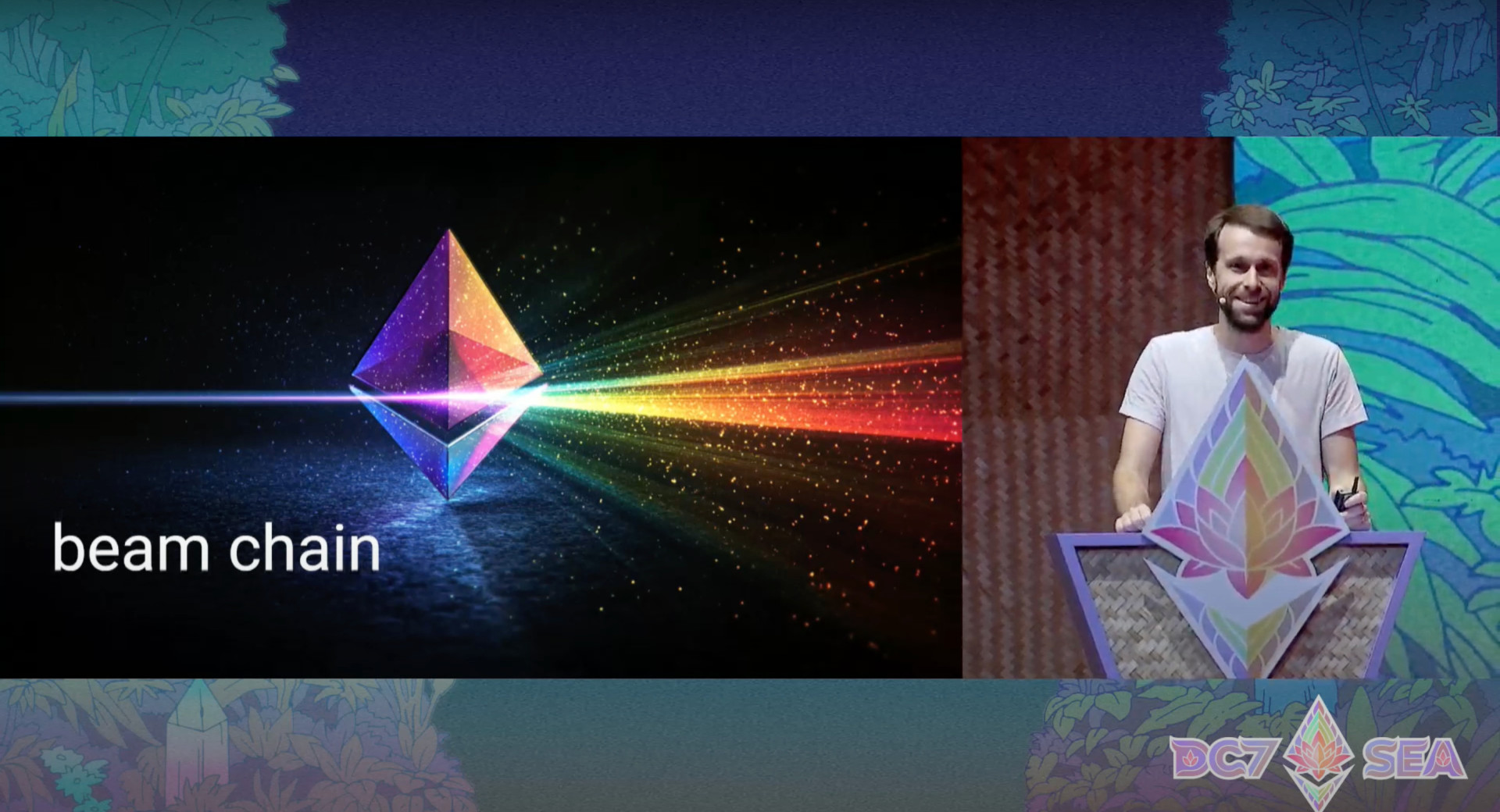Ethereum developer Justin Drake said his comprehensive proposal to overhaul the second-largest blockchain’s consensus layer isn’t about catching up with a rival, it’s about sticking around for the long haul.
Drake unveiled the proposal, known as the Beam Chain, at Ethereum’s biennial Devcon gathering in Bangkok last month, at a time when the network’s native token ETH is lagging behind its counterparts at other major layer-1 blockchains.
Story continues below
The Ethereum network enjoyed wide adoption over the last few years, making it more expensive and slower to use. In response, a cohort of layer-1s, known as “Ethereum killers,” emerged in 2020 to compete with Ethereum on transaction speeds, and Solana has been seen as the leader of the pack.
Recently, activity on Solana has exploded, mainly thanks to the surge of memecoins on the blockchain, with users wondering whether it will overtake Ethereum as the “hot” chain.
But Drake said he doesn’t see Solana as a threat to Ethereum. Neither does he see the Beam Chain as a way to restore Ethereum’s edge in the short term.
The Beam Chain “is all about improving the long-term health and security of the consensus layer, it has nothing to do with performance,” Drake said in an interview with CoinDesk.
“Solana has no consideration for health. The only thing they care about is performance. They care about reducing latency and increasing throughput,” Drake added.
Ethereum has tried to address the scalability challenge, by pushing forward a rollup-centric roadmap, meaning users can transact faster and more cheaply on a bunch of auxiliary networks, known as layer-2s or rollups. Popular layer-2s on top of Ethereum include Arbitrum, Optimism, Base, and ZKsync.
Ethereum developers have heavily relied on the layer-2s to offer faster and lower transaction fees.
“I think the layer-1 is competing with Bitcoin, and the layer-2s are competing with Solana. And so it’s not even part of the remit of the layer-1 to even compete with Solana,” Drake said. “We should be competing on security and health. And so if there’s any competition to Solana, it needs to come from the applications and from the layer-2s.”
Arbitrum for example, has a slot time, or time between blocks of transactions being published to the chain, of 250 milliseconds. “That is faster than Solana,” Drake said. (According to a recent research report from Galaxy Digital, “Solana targets slot times of 400 milliseconds, though they typically range from 500-600ms in practice.”)
Drake did add, though, that there are some features for Ethereum’s layer-1 that developers have worked on that will make Ethereum more competitive on speed with Solana.
The main ones are “pre-confirmations,” which speed up the confirmation of transactions and are supposed to make the user experience on Ethereum as smooth as Solana’s, as well as “blobs,” a feature that allows Ethereum to process large batches of transaction data off-chain. But these are all separate from the Beam Chain, which Drake has said he is hoping to implement by 2029.
And while Solana is seeing a lot of momentum, Drake said he is tuning out the noise to focus on long-term gains for Ethereum.
“Solana is having its moment right now, but I think it’s going to be the end of the Solana golden era, because all of the competitive advantages that Solana has around latency and throughput are going to melt away because of fundamental differences in architecture that don’t make it scalable,” Drake said.
A Solana spokesperson did not respond to a request for comment by press time.
Ultimately Drake said, his North Star is to create an “internet of value,” and the Beam Chain is what he thinks is needed to achieve that.
“We need a super-secure, incredibly neutral layer-1 and then we need a very rich and vibrant ecosystem of layer-2s that bring the application to the users,” he said.
Read more: Top Ethereum Researcher’s Dramatic Proposal Draws Standing-Room-Only Crowd

